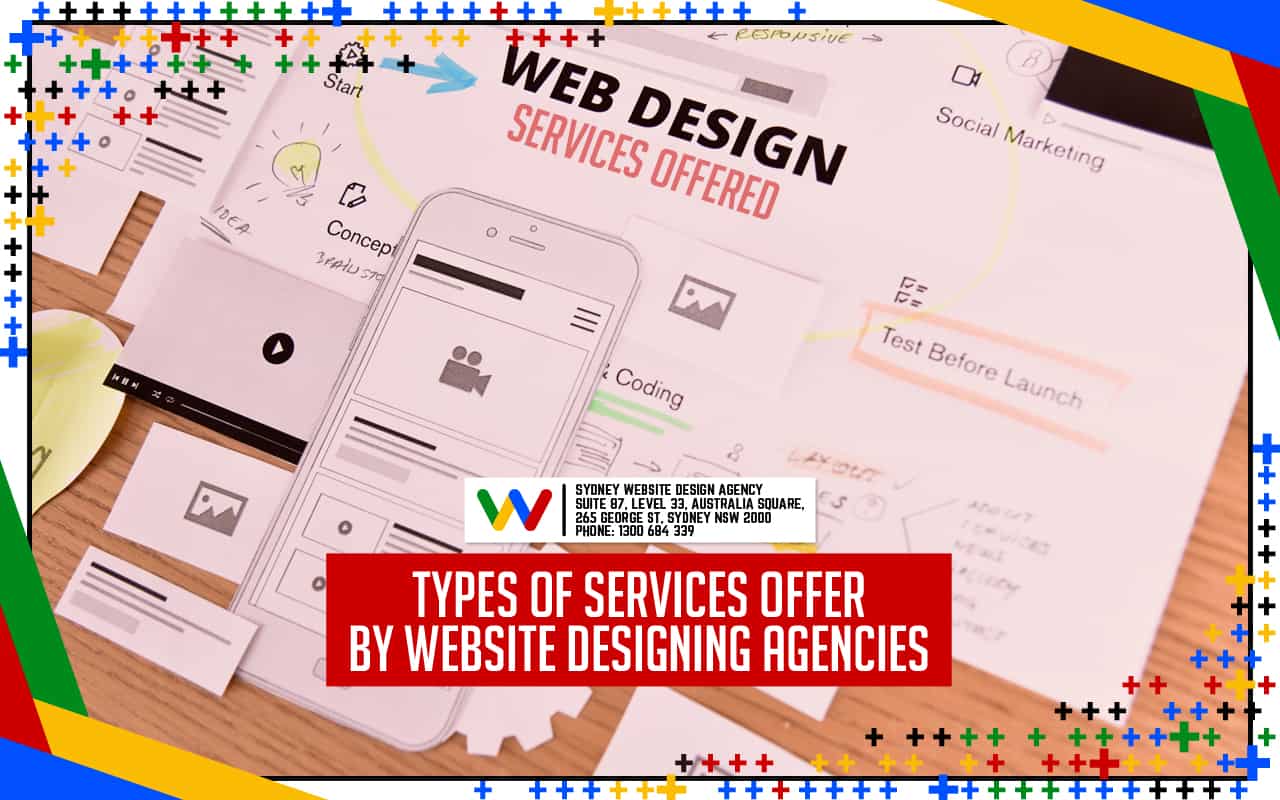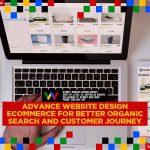Your web page design is often the first page visitors see when they come to your website. Decent website templates are critical for generating leads for your company since it aids in lead generation.
Because of the information accessible on your very own website, once your target audience discovers your business online and becomes interested in your products and services, they’ll know how to contact you because of that content.
The main purpose of having your website is to have a physical representation of your business on the online world. Doing so gives a brand the opportunity to get noticed by its audiences who happen to look and buy products and services online.
As cliché as it may sound, not having a website deprives your brand of the tremendous opportunity the internet offers. Thus, paying attention to your website’s visual hierarchy, website elements, and other visual content can help you succeed online.
Thus, having a website that is designed to generate leads and sales is a must. How can anyone achieve this? Through the help of web design services.
Introduction
In the current digital age, more and more businesses are recognising the importance of having an online presence. One of the best ways to establish a strong and credible online presence is through website design.
A well-designed website can help to build your brand, attract attention from potential customers, boost your overall credibility and increase your leads and sales. Furthermore, website designing can also help you to stay ahead of the competition.
In today’s market, it is essential for businesses to have a website that is both visually appealing and functional. By investing in website design, you can give your business the best chance of success in the ever-changing digital landscape.
Table of Content
- Key Benefits of Having an Online Presence
- How to Craft the Right Website Designing Approach
- Qualities of a Robust Web Design Ideal for Businesses
- Types of Services Offer By Website Designing Agencies
- How A Web Design Agency Helps Grow Your Audience
- Identifying Which Website Design Agency
- FAQs for Website Designing
- When Is the Perfect Time to Invest in Website Designing Services?
Key Benefits of Having an Online Presence

Why is online presence so important for businesses? Online presence is everything that exists under an entity’s name on the internet. This encompasses web page, online store, accounts, assets, interactions, and any pieces of information created by or about the person or business.
In other words: if it’s attached to your name or business online in any way, shape, or form, it contributes to your online presence.
These days, anyone can look you up online at any time. And when they do, what they find will shape their opinion of you—for better or for worse.
That’s why it’s so critical to be intentional about your online presence. You want to make sure that the information out there presents you in the best possible light and accurately reflects who you are and what you stand for.
One key element of a strong online presence is having a well-designed website that aids in focus users attention. Your website is often the first thing potential customers will see when they look you up online. And first impressions matter!
Your audiences can easily judge you with your website’s built-in features, web page design, and site’s performance. Be it with mobile devices or on the web. A responsive web design is critical to the success of your business.
Generating Leads and Sales
A well-designed website can help you generate leads and sales by making it easy for potential customers to find your business online and learn more about what you have to offer.
Building Trust and Credibility
A strong online presence can help build trust and credibility with potential customers. When people can readily find information about your business online, they’re more likely to feel confident doing business with you.
Increasing Brand Awareness
Consistent online presence will help increase brand awareness for your business. The more times people see your name and branding across the web, the more likely they are to remember you when they need the products or services you offer.
Improving Customer Service
An online presence can also help improve customer service. Having a website that’s easy to navigate and provides customers with the information they’re looking for can help save them time and frustration. Additionally, being active on social media and responding to customer inquiries in a timely manner can show that you care about providing excellent customer service.
Larger Audience
Reach a larger audience with your message by creating an online presence. You can share your story, build relationships, and connect with people from all over the world.
Sets You Apart from Competitors
An online presence can help you stand out from your competitors. In today’s digital age, customers expect businesses to have an online presence. If you don’t have one, you could be disadvantaged.
How to Craft the Right Website Designing Approach

Your website is typically the first impression potential customers or partners will have of your company. It’s a chance to make a good, lasting impression that sets you apart from your competition.
So, it’s influential to take some time and put some thought into designing an effective website for your business. Here are a few tips on how to craft the right approach to website design for your business:
Set Your Business Goals and Brand Personality First
Before you start designing anything, it’s influential to have a good understanding of your business goals and the personality of your brand. What do you want your website to achieve? How do you want visitors to perceive your company? Once you have a clear idea of your goals and brand identity, you can start creating a design that will reflect those values.
Market and User Research
After conducting market research, designers then assess potential competitors. By learning from other’s experiences—whether they be positive or negative—designers create logos that are not only unique but efficient to build a brand identity that will make their company compete against others.
The needs of the target audience should always come before the preferences of designers or clients. A brand needs to make a good first impression on its potential buyers or users to gain their trust, and user research can help brands get more profound insights into the preferences and psychological peculiarities of their target audiences.
Creative Research
Creative research helps a designer to come up with new and innovative ideas. This type of research is based on the principle that everything is interconnected.
So, by studying one thing, a designer can learn something completely unrelated that can be applied to their work. For example, by researching the history of art, a web designer might come up with a new way to arrange elements on a page or come up with a colour scheme that is more presentable for the visitors.
Sketching and Wireframing
After conducting all the necessary research, it’s time to start sketching out your ideas. This is usually done in the form of wireframes—simple black and white layouts that show the structure of your website without any of the visual elements.
Creating wireframes helps you to organise your content in a way that makes sense and is easy to navigate. It also allows you to experiment with different design ideas without getting too bogged down in the details.
Designing Your Pages
Once you’ve created wireframes for all the pages on your website, it’s time to start designing them. This is where you’ll add in all the visual elements, such as colours, fonts, and images. When designing your pages, it’s important to keep your brand identity and target audience in mind. Your designs should reflect your company’s values and appeal to your users.
Testing and Launch
Before launch, it’s essential to test your website to make sure everything is working as it should. You should also ask some people from your target audience to test your site and give you feedback. Once you’ve made any necessary changes, you can launch your website and start promoting it.
By following these steps, you can create a well-designed website that reflects your brand identity and appeals to your target audience.
Qualities of a Robust Web Design Ideal for Businesses

There are five elements to effective web design – content, usability, aesthetics, visibility, and interaction. Here are more details on each:
Content
There’s no doubting that ‘Content is King.’ It has a significant role in Search Engine Optimisation (SEO), and it’s one of the most common reasons why people visit your website.
If you want to keep users on your website for extended periods of time, you need to create engaging content. This includes incorporating videos, updated news stories, and high-quality images into your website.
Usability
If a website is great, users will never consciously think about the usability. On the other hand, if it’s terrible, they will definitely take notice. Keep your website easily navigable, so people can find what they need quickly and without frustration.
Users should always be aware of their website location and be able to navigate to any desired page without difficulty. All pages on the site should also be accessible without having to view the entire website.
Your site should try to anticipate what your visitors want and assist them in doing so as quickly as possible.
Aesthetics
The overall look and feel of your website is important in making a good impression. It needs to be visually appealing, while still maintaining a professional appearance. Your website should also be consistent with your branding across all platforms.
This includes using the same colours, fonts, and logo. Visibility In order for your website to be effective, it needs to be visible to potential customers. This means that it must rank highly in search engine results pages (SERPs).
Interaction or User Experience (UX)
Your website’s user experience (UX) is how easy or enjoyable it is to use your website. This includes everything from the navigation to the content and even the overall look and feel of the site. Creating a positive UX is essential in keeping visitors on your website and ensuring that they have a good experience.
Some ways to improve your website’s UX include simplifying the navigation, using clear and concise copy, and adding visuals such as images and videos.
When it comes to web design, businesses need to focus on creating a site that is both robust and user-friendly. By doing so, they can ensure that their site will be visible to potential customers and that they will have a positive experience when they visit.
Types of Services Offer By Website Designing Agencies

A duty of a web designer job is to plan, create, and design sites and web pages. This involves working with text, sounds, pictures, graphics, and video clips to create a website or web page that is appealing and easy to navigate.
You may be starting from scratch with a new website or updates an existing one, either way it’s important that the final product meets the needs of the client.
Among the most common website design services most web design agencies offers are as follows.
User Research
User research uses different methods to figure out what users need and want, so that designers can create the best possible design. User researchers use a variety of approaches, such as interviews and surveys, to identify user needs.
Testing
After the site is designed and built, it needs to be tested. Testing can be done with real users or with simulated users (such as in a lab). Testing helps identify any problems with the design so that they can be fixed before the site goes live.
Custom WordPress Designs
A custom WordPress design is a unique design for a WordPress site, created by a web designer. Custom WordPress designs are usually more expensive than pre-made themes, but offer more flexibility and customisation.
UX/UI Design
UX/UI design is the process of designing user interfaces that are both effective and appealing. This includes planning how the interface will look and work, as well as making sure it is easy to use.
A website design agency can offer a variety of services, including creating a website from scratch, redesigning an existing site, search engine optimisation, and ongoing maintenance and updates. By investing in professional web design services, businesses can improve their online presence and attract more customers.
How A Web Design Agency Helps Grow Your Audience

As a business owner, you may be wondering how a web design agency can help you reach a wider audience and boost your sales. The answer is simple: by helping you create a website that is both effective and engaging, a web design agency can help you attract more visitors to your site, which can lead to more leads and sales.
Here are a few ways a web design agency can help you grow your audience reach:
1. By creating a responsive website design, a web design agency can help you ensure that your website is accessible to users on all devices, including smartphones and tablets.
This is important because more and more people are using mobile devices to access the internet. If your website is not designed to be viewable on these devices, you could be missing out on a large portion of your potential audience.
2. A web design agency can also help you create an effective SEO strategy for your website. SEO, or search engine optimisation, is a process of optimising your website for Google and other search engines so that your site appears higher in search results for relevant keywords.
This is critical because the higher your website appears in search results, the more likely people are to click on it, which can lead to more traffic and, ultimately, more sales.
3. In addition to creating a responsive website and an effective SEO strategy, web designers can also help you create compelling content that will engage and convert your site visitors into leads and customers.
By creating high-quality, informative content that speaks to your target audience, you can persuade them to take action, whether that’s signing up for your newsletter, downloading a white paper, or making a purchase.
If you’re ready to take your business to the next level, contact a web design agency today and see how they can help you grow your audience reach and boost your sales.
Identifying Which Website Design Agency is Best for Your Needs

Choosing a website design agency can be tricky, especially if you’re not sure what your needs are. The best place to start is by evaluating what your goals are for your website.
Do you want to increase sales? Drive more traffic to your site? Educate your customers? Once you know what you want your website to do, you can start looking for an agency that specialises in those types of results.
Once you’ve identified a few agencies that look promising, it’s time to start doing some research. See their past work and see if it aligns with the kind of results you’re looking for.
Read online reviews and see what other people have said about their experience working with the agency. And finally, make sure to get a quote from each agency before making your final decision.
FAQs for Website Designing
What is website designing?
It involves considering the website’s purpose, target audience, and desired outcomes to create a design that effectively communicates the intended message and facilitates user interaction.
Website designers use various design principles, coding skills, and design software to craft visually appealing and user-friendly websites that are accessible across different devices and screen sizes.
Key elements of website designing include visual hierarchy, responsive design for different devices, site architecture, and usability tests to ensure an optimal user experience. Website designing also involves integrating advanced features such as interactive elements, live chat widget, and e-commerce capabilities for businesses looking to sell online.
Website designers must ensure legal compliance, web accessibility, and compatibility with different browsers and assistive technologies to create inclusive and functional websites.
What types of services do website designing agencies typically offer?
- Domain Registration: Assisting individuals and businesses in the process of registering unique and memorable domain names for their websites through domain registrar.
- Website Hosting: Offering server space and robust infrastructure to efficiently host websites, ensuring seamless accessibility and reliability for online platforms.
- Website Development: Developing websites involves the intricate process of utilising a diverse range of programming languages and frameworks to build dynamic and interactive online platforms.
- Website Designing: Designing and meticulously implementing the visual elements along with the user interface are critical tasks that require attention to detail and a keen eye for user experience.
- Mobile Responsive Design: Mobile website optimisation is crucial in today’s digital age. Businesses need responsive design & mobile-friendly features for better user experience & wider reach. Prioritise strategies like responsive layouts & fast loading times to meet mobile users’ needs & stay competitive online.
- Site Content Creation: Creating engaging and informative content tailored specifically for websites, whether through writing original pieces or curating existing material, plays a vital role in attracting and retaining online audiences.
- Digital Marketing: Providing a comprehensive range of services aimed at enhancing website visibility and engagement. This includes implementing effective search engine optimisation (SEO) strategies, leveraging the power of social media platforms, and utilising various online channels to drive traffic and improve online presence.
- Comprehensive Guides: Offering comprehensive tutorials and a wide array of resources to assist clients in effectively managing and optimising their websites for improved functionality and user experience.
- Web Design Tools: Leveraging advanced software applications and a variety of tools to craft bespoke and visually appealing website designs tailored to meet specific requirements and preferences.
- User Experience (UX) Design: Focusing intently on crafting a seamless and delightful browsing experience for users, ensuring effortless navigation and content accessibility throughout the website.
- Site Optimisation: Boost website performance and speed to deliver a smooth browsing experience. Optimise loading times, streamline navigation, and ensure responsive design for engaging visitors and encouraging return visits.
- Social Media Integration: Integrating websites with social media boosts visibility and engagement. Connecting online presence to platforms like Facebook, Twitter, and Instagram widens audience reach and fosters interactions. This creates a dynamic online community, enhancing brand awareness.
How much does it cost to design a business website?
Ongoing expenses like domain registration, wordpress hosting, security and maintenance should be considered. It’s essential to gather feedback and ensure the site is user friendly, mobile responsive, and optimised for search engines to attract and retain website visitors.
How does website design impact lead generation for businesses?
A well-designed website with intuitive navigation, engaging content, and clear calls-to-action enhances user engagement, encouraging visitors to explore further through the website page and ultimately convert into leads.
Responsive web design ensures accessibility across various devices, expanding the reach to potential leads.
Optimised elements such as search engine optimisation (SEO), landing pages, and compelling visuals contribute to higher visibility and conversion rates. By creating an attractive, user friendly site, businesses can effectively capture and nurture leads, driving growth and success.
How can businesses craft the right approach to website design?
- Understanding Requirements: Define the purpose and goals of the website’s design.
- Research and Analysis: Conduct market research, analyse competitors, and gather feedback from stakeholders.
- User Experience UX Design: UX design focuses on seamless and intuitive experience for website visitors.
- Visual Design: Incorporate appealing visuals, a consistent colour scheme, and ample white space.
- Responsive Site: Ensure the website is accessible and functional across various devices and screen sizes.
- Content Strategy: Develop high-quality, relevant site content that engages users and aligns with SEO principles.
- Navigation and Internal Links: Implement easy-to-use navigation and relevant internal linking structure.
- Testing and Optimising: Continuously test and optimise the website for performance, usability, and user satisfaction.
- Stay Up to Date: Keep the website’s design, content, and functionality updated to meet evolving needs and trends.
- Feedback and Iteration: Gather feedback from users and stakeholders, and iterate on the design based on insights gathered.
Perfect Time to Invest in Website Designing Services?

A well-designed website can have a major positive impact on a small business, so investing in web design services is a wise decision at any time. However, it may be particularly beneficial to invest in website redesign or creation before launching a new product or service, starting a marketing campaign, or making other significant business changes.
By ensuring that your website accurately reflects your brand and effectively promotes your offerings, you can maximise the success of these initiatives.




















































